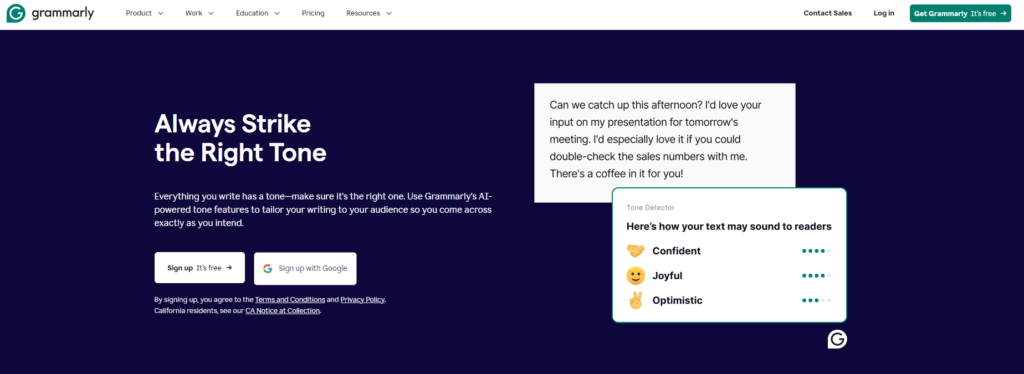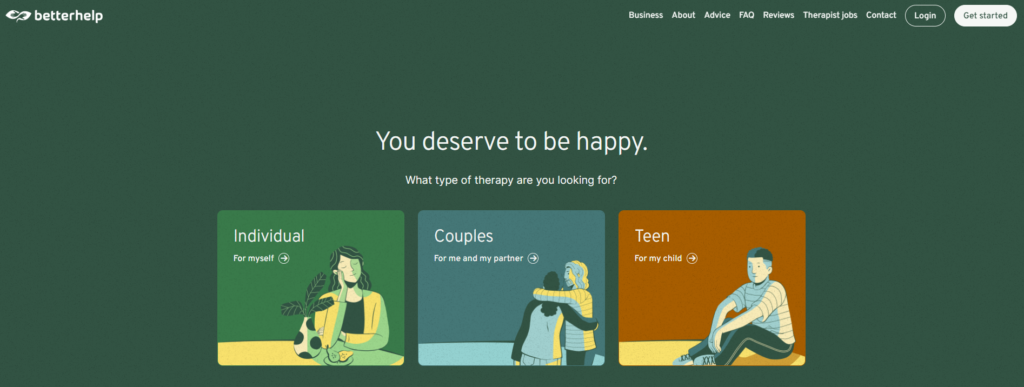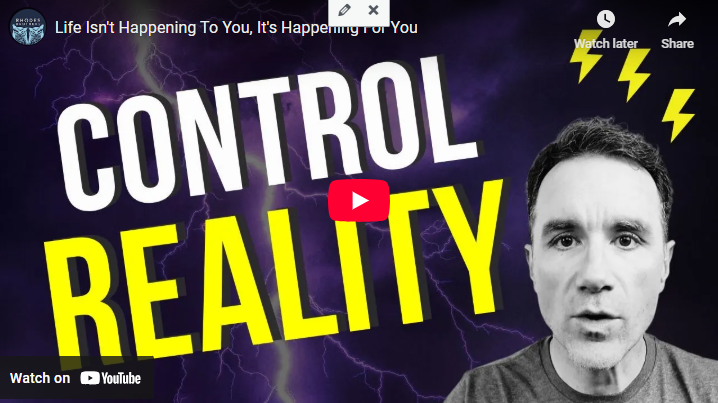For More Free Videos, Subscribe to the Rhodes Brothers YouTube Channel.
“Every master was once a beginner.” This wisdom from John S. Rhodes of the Rhodes Brothers YouTube channel reminds us that even the most charismatic people started out unsure of themselves in conversations. Awkwardness is not a personality trait; it’s a skill gap—and the good news is, you can bridge it.

If you’ve ever found yourself fumbling for words, avoiding eye contact, or obsessing over what to say next, you’re not alone. However, with the right strategies, talking to people (even strangers) can become as natural as breathing. In this guide, we’ll cover actionable techniques to help you confidently navigate conversations, make meaningful connections, and avoid those dreaded awkward silences.
Whether you’re preparing for an interview, meeting someone new at a party, or even trying to impress a date, these approaches will ensure you feel calm, confident, and in control.
TL;DR
- Start simple: Introduce yourself with a smile and a handshake—“Hi, I’m [Your Name], nice to meet you.”
- Mirror energy: Use phrases like “That sounds awesome!” to show enthusiasm and build rapport.
- Ask great questions: Keep the conversation flowing by asking open-ended questions like “How did you get into [topic]?”
- Avoid pitfalls: Don’t talk about yourself too much, avoid long gaps, and steer clear of diving too deep into heavy topics early on.
- Practice positivity: Compliment genuinely—“You’ve been glowing lately. What’s your secret?”—to energize the interaction.
Mastering the Art of Conversation: Tools, Strategies, and Examples
Conversations are the threads that connect us, yet so many of us feel awkward and unsure about where to start, what to say, or how to keep the flow going. The good news? You don’t need to be a natural-born conversationalist to excel at it. With the right tools, strategies, and a little practice, you can master the art of conversation and build meaningful connections effortlessly.
Start With Confidence: The Power of a Simple Introduction
You walk into a networking event or a room full of strangers. You don’t know anyone, and the thought of introducing yourself makes your heart race. What’s your move?
The answer is surprisingly simple—just introduce yourself confidently. As John S. Rhodes says in his video, “Hi, I’m [Your Name], nice to meet you” is all it takes to break the ice. This straightforward, universally understood approach sets the tone for a positive, engaging interaction. Pair this with a friendly smile and a handshake (or culturally appropriate greeting), and you’ll leave a lasting first impression.
Why It Works:
- Psychological Reciprocity: Sharing your name invites the other person to share theirs. It’s a natural social exchange.
- Breaks the Ice: A warm, simple introduction eases tension for both parties.
- Sets the Tone: Smiling and speaking clearly signals confidence, friendliness, and openness.
Pro Tip:
Practice introducing yourself in front of a mirror or with a trusted friend. Pay attention to your tone of voice, body language, and facial expressions. The more you practice, the more natural it will feel in real-life situations.
Example Tool to Try:
- LinkedIn Profile Practice – Use your LinkedIn profile as a blueprint for practicing introductions. Write and rehearse a version of your “elevator pitch” that you can adapt to different social or professional settings.
Show Genuine Enthusiasm With Positive Feedback
People love to feel heard, validated, and appreciated. When someone shares something with you, responding with genuine enthusiasm can instantly make the conversation more enjoyable for both parties.
Phrases That Work:
- “That sounds awesome!”
- “Wow, I see what you mean.”
- “How did you get into that?”
These phrases, highlighted by Rhodes, signal active listening and interest. Enthusiasm is contagious—when people see that you’re genuinely excited about what they’re saying, they’re more likely to open up and continue the conversation.
Example:
- Let’s say someone tells you about their recent hiking trip. Instead of just nodding, you might respond: “That sounds incredible! Where did you go? How long was the hike?”
Notice how this not only validates their experience but also invites them to share more details, keeping the conversation flowing naturally.
Tool to Try:
- The “Yes, and” Technique – Borrowed from improv comedy, this approach involves affirming what the other person says (“Yes!”) and building on it (“And how did that feel?”). This creates a seamless conversational flow and shows genuine engagement.
Ask Open-Ended Questions to Keep the Conversation Flowing
One of the most powerful ways to connect with others is by being curious about them. Instead of worrying about what to say next, shift your focus to learning about the other person.
Great Open-Ended Questions:
- “What’s the story behind that?”
- “How did you discover [topic]?”
- “What’s been keeping you busy lately?”
According to a Harvard study, people feel more positively about conversations where they get to talk about themselves. By asking thoughtful, open-ended questions, you’re giving the other person a chance to shine.
Pro Tip:
Prepare a few go-to questions for different scenarios—networking events, social gatherings, or professional meetings. For example, at a professional event, you might ask, “What inspired you to get into this line of work?”
Example Tool to Try:
- The F.O.R.D Framework – Use this handy acronym to guide your questions:
- Family: “Do you have siblings? What are they like?”
- Occupation: “What do you enjoy most about your job?”
- Recreation: “Any fun plans for the weekend?”
- Dreams: “What’s something you’re excited about right now?”
Fill Silences With Purposeful Positivity
Awkward silences happen to everyone. Instead of panicking or overthinking, use these moments to re-energize the conversation with a positive observation or comment.
Examples of Purposeful Positivity:
- “You’ve been busy lately, haven’t you? What’s going on?”
- “You seem really happy today—what’s the secret?”
These comments not only fill the silence but also make the other person feel seen, appreciated, and encouraged to share more.
Why It Works:
People naturally love to talk about themselves, especially when prompted with positivity. Compliments and observations shift the focus away from silence and onto something meaningful.
Pro Tip:
If you’re unsure what to say, try complimenting something specific about the person—like their energy, outfit, or recent accomplishments.
Example Tool to Try:

Grammarly Tone Detector – While originally designed for written communication, this tool can help you practice crafting positive, engaging messages, which translates into better verbal interactions.
Tools and Strategies to Build Conversational Confidence
- Use the F.O.R.D. Framework
When in doubt, fall back on this simple framework to guide your questions:
-
- Family: “Do you have siblings? How are they doing?”
- Occupation: “What’s your favorite part of your job?”
- Recreation: “Any fun plans this weekend?”
- Dreams: “What’s something you’re excited about right now?”
- Leverage Apps to Practice

-
- BetterHelp: Overcome social anxiety with professional counseling.
- Meetup: Connect with local groups and practice social skills in a comfortable setting.
- Conversation Starter Cards: Apps like Icebreaker or Table Topics can help you generate conversation ideas.
- Practice Active Listening
Active listening is a key ingredient in any successful conversation. Use techniques like:
- Paraphrasing: “So what you’re saying is…”
- Nodding: Nonverbal cues like nodding show that you’re engaged and paying attention.
- Follow-Up Questions: Build on what the other person says to show genuine interest.
Tool to Try:
- Otter.ai – Record and transcribe conversations (with permission) to analyze how well you’re engaging and identify areas for improvement.
By combining these tools, strategies, and examples with consistent practice, you’ll quickly build your confidence and become a conversational pro. Conversations are opportunities to build relationships, share ideas, and discover common ground. With the right approach, you’ll never worry about awkward silences or missed opportunities again.
Actionable Steps to Talk to People Without Being Awkward
Whether you’re an introvert, extrovert, a seasoned professional, or a beginner in social settings, mastering the skill of talking to people confidently is within your reach. Here’s a step-by-step guide tailored to all experience levels and demographics to help you navigate conversations smoothly, connect with others, and leave a positive impression.
Step 1: Begin With a Simple and Friendly Introduction
The cornerstone of any interaction is a confident introduction. This step is universal across all contexts, whether you’re meeting a friend’s family, networking, or striking up a casual conversation.
How to Do It:
- Smile warmly as a way to set a positive tone.
- Use a clear and friendly tone to say, “Hi, I’m [Your Name], nice to meet you!”
- Add a handshake (or culturally appropriate greeting) to reinforce connection.
Example for Beginners:
- At a casual gathering, you could say: “Hi, I’m Maya. I don’t think we’ve met before—what’s your name?”
Example for Professionals:
- In a workplace scenario, keep it formal: “Hi, I’m James from the marketing department. It’s great to finally meet in person!”
Step 2: Mirror Their Energy and Use Positive Feedback
Once the conversation begins, your goal is to make the other person feel comfortable. Matching their tone and enthusiasm creates an instant sense of rapport.
How to Do It:
- Listen actively to what they’re saying.
- Mirror their energy level—if they’re calm, slow down; if they’re excited, match their enthusiasm.
Use positive feedback to encourage them to share more, such as:
- “That’s amazing!”
- “Wow, I can see why you’re excited about that!”
- “How did you get into that?”
Example for Beginners:
- If someone says, “I just started learning photography,” you might respond:
“That’s so cool! Photography is such a great skill. What kind of photos do you like taking?”
Example for More Experienced Conversationalists:
- When networking, if someone says, “I’m working on a startup idea,” respond enthusiastically: “That’s exciting! What inspired you to start your own business?”
Step 3: Ask Open-Ended Questions to Keep the Conversation Flowing
Open-ended questions encourage longer, more meaningful responses. They also take the pressure off you to keep the conversation alive.
How to Do It:
- Avoid yes/no questions—ask questions that require explanation.
- Tailor your questions to the context.
- Use questions to dive deeper into what the other person enjoys or cares about.
Go-To Open-Ended Questions:
- “What’s the story behind that?”
- “How did you discover that interest?”
- “What’s been keeping you busy lately?”
Example for Beginners:
- At a party, you might ask: “What’s your favorite thing about [the event/host/place]?”
Example for Professionals:
- At a conference, you could say: “What’s been the most exciting project you’ve worked on this year?”
Step 4: Fill Silences With Observations or Compliments
Awkward silences are normal, but they don’t have to derail the conversation. Instead, use the pause as an opportunity to compliment the person or make an observation about your surroundings.
How to Do It:
- Observe something positive about the other person or the environment.
- Use a casual tone to break the silence and re-engage.
- Keep the comment light and friendly to maintain a positive atmosphere.
Examples of Observations:
- “The decorations here are so creative! I wonder who designed them.”
- “You seem really confident when you talk about [topic]—I admire that!
Examples of Compliments:
- “That’s a great jacket—it really suits you!”
- “You’ve got such an interesting perspective on that. I hadn’t thought of it that way before!”
Step 5: Adjust Your Approach Based on the Setting
Different environments call for different conversational strategies. Tailoring your approach ensures you’re appropriate while still being engaging.
Casual Settings (Friends, Social Gatherings):
- Be laid-back and informal.
- Share a little about yourself to encourage mutual sharing.
- Example: “I just tried paddleboarding for the first time last weekend—it was harder than I thought! Have you ever tried it?”
Professional Settings (Networking, Workplace):
- Focus on professional topics and shared goals.
- Use questions like: “What inspired you to get into this field?”
- Keep the tone polite and confident.
Family or Intimate Settings (Meeting Parents, Close Friends):
- Show genuine interest in their family, values, or traditions.
- Compliment something specific, like: “You’ve created such a warm and welcoming home.”
Step 6: Use Technology and Tools to Practice and Improve
If you’re feeling unsure about your skills, leverage tools and apps to practice your conversational abilities and gain confidence.
Recommended Tools:
- BetterHelp: For overcoming social anxiety with professional counseling.
- Meetup: Join social groups to practice conversations in low-pressure environments.
- Grammarly’s Tone Detector: Refine your communication tone by practicing how to write positive, engaging messages.
- Icebreaker Apps (like Table Topics): Generate fun conversation starters to use in real life.
- Otter.ai: Record practice conversations and review them to identify areas for improvement.
Pro Tip:
If you struggle with finding the right words, consider using apps like PromptSmart, which provide conversational cues and topics to keep the discussion flowing.
Step 7: Practice Active Listening
Active listening is the backbone of great conversations. It’s not just about hearing words but also understanding and responding to the emotions behind them.
How to Do It:
- Maintain eye contact to show you’re engaged.
- Paraphrase what the other person says: “So you’re saying that [summary]?”
- Use subtle nonverbal cues, like nodding or smiling, to show interest.
- Avoid interrupting—let them finish their thoughts.
Example for Beginners:
If someone says, “I’ve been working on a new fitness routine,” you could respond:
“That’s great! So you’re focusing on building healthier habits—what’s been your favorite part so far?”
Example for Advanced Conversationalists:
At work, when someone shares an idea, paraphrase and build on their thought:
“So you’re suggesting we focus on [specific strategy]? That’s a great idea—how do you think we can implement it effectively?”
Step 8: Practice with Low-Stakes Conversations
If talking to strangers feels intimidating, start small by practicing in low-pressure environments.
Where to Start:
- Cashiers or Baristas: Compliment the service or ask a friendly question like, “How’s your day going so far?”
- Neighbors: Strike up a conversation about the weather or local events.
- Coworkers: Ask about their weekend plans or hobbies.
Why It Works:
- Low-stakes conversations help you build confidence without the fear of rejection. Over time, these interactions will feel natural and effortless.
Step 9: End Conversations Gracefully
Knowing how to wrap up a conversation is just as important as starting one. A strong exit leaves a lasting impression.
How to Do It:
- Summarize the conversation: “It was great hearing about your trip to Italy!”
- Express gratitude: “Thanks for sharing that—it was really interesting!”
- Suggest a follow-up if appropriate: “Let’s stay connected! Are you on LinkedIn?”
Example:
- At a networking event, you could say: “It’s been great talking to you. I have to run to another session, but I’d love to follow up—do you have a card or LinkedIn profile?”
By following these actionable steps, you’ll be able to approach any conversation with confidence and ease. Remember, practice makes perfect. Start small, build your skills, and watch your social interactions transform!
Common Mistakes to Avoid
Even the most seasoned conversationalists can stumble into a few common pitfalls that derail meaningful interactions. Avoiding these mistakes is key to building rapport, maintaining a natural flow, and leaving a positive impression. Here are three frequent missteps to watch out for, along with actionable tips on how to sidestep them.
Overthinking Your Responses
One of the most common pitfalls in conversations is overthinking your responses. You may find yourself stuck in your head, obsessing over saying the “perfect” thing or worrying about how the other person will perceive you. This often leads to awkward pauses, unnatural delivery, or even avoiding conversations altogether. The truth is, conversations are not about perfection—they’re about connection. Instead of fixating on crafting the ideal response, focus on being present and authentic. Listen to the other person, respond naturally, and trust that your genuine interest will carry the interaction forward. Remember, people are more drawn to authenticity than rehearsed words.
Not Matching the Other Person’s Energy
Conversations flow best when both parties are in sync. If someone is relaxed and speaking softly, coming in with loud, high-energy chatter can feel overwhelming or even off-putting. Similarly, if someone is animated and enthusiastic, responding with low energy might make you seem disinterested. Matching the other person’s tone, pace, and energy level creates a sense of harmony and rapport. This doesn’t mean you have to mirror them exactly, but a little adjustment can make a huge difference. For example, if someone is calm and reflective, lean into a more thoughtful tone. If they’re excited and bubbly, don’t be afraid to match their enthusiasm. Adapting to their energy shows that you’re tuned in and builds a stronger connection.
Forgetting Names
Forgetting someone’s name immediately after they’ve introduced themselves is a common mistake that can unintentionally signal disinterest or inattentiveness. Names are deeply personal, and remembering them is a small but powerful gesture that makes others feel valued and respected. To avoid forgetting, try repeating their name during the conversation: “Nice to meet you, Sarah!” or “So, Sarah, how did you get into this field?” Another trick is to associate their name with a visual or characteristic—like imagining “Mike” holding a microphone if he’s in public speaking. If you do forget, don’t panic. Politely ask, “I’m so sorry, could you remind me of your name?” Most people will appreciate the effort and won’t hold it against you.
By avoiding these common mistakes, you’ll not only feel more confident in your conversations but also leave a positive impression on the people you interact with.
Frequently Asked Questions
How can I start a conversation with a stranger?
Begin with a simple greeting like, “Hi, I’m [Your Name].” Follow up with a question about their surroundings or interests.
What’s the best way to avoid awkward silences?
Prepare a few go-to questions or observations to fill gaps naturally.
How do I handle a conversation that’s going off track?
Gently redirect by saying, “That’s interesting! It reminds me of…” and steer toward a new topic.
What’s the biggest mistake people make in conversations?
Talking too much about themselves. Focus on asking questions and listening.
How can I become better at small talk?
Practice in low-stakes environments, like chatting with a cashier or coworker.
Is it okay to rehearse conversations?
Absolutely! Practicing your introduction or key questions can help you feel more confident.
How important is body language?
Very! Smile, maintain eye contact, and use open gestures to appear approachable.
What if I forget someone’s name?
Apologize and ask politely—“I’m sorry, could you remind me of your name?”
How do I end a conversation gracefully?
Say something like, “It was great talking to you! Let’s catch up again soon.”
Can introverts be good at conversations?
Absolutely! Introverts often excel at deep, meaningful conversations once they feel comfortable.
Your Journey to Becoming a Great Conversationalist
Mastering the art of conversation doesn’t require a natural gift—it’s a skill anyone can develop with practice and intention. By starting with simple introductions, showing genuine interest, and avoiding common pitfalls, you can transform even the most awkward interactions into meaningful connections.
Remember, as John S. Rhodes wisely said, “Every master was once a beginner.” So give yourself grace as you practice these techniques. With time, you’ll find yourself navigating conversations with ease and confidence.
Key Takeaways to Apply Today:
- Start simple: Practice introducing yourself confidently with a smile and a handshake.
- Be curious: Use open-ended questions like, “How did you get into that?” to keep the conversation flowing.
- Stay positive: Compliment genuinely and observe things about the other person to create a sense of connection.
- Avoid pitfalls: Don’t dominate the conversation, and steer clear of diving into heavy topics right away.
- Use tools: Leverage the F.O.R.D. framework and apps to practice and refine your skills.
Now it’s your turn to put these lessons into practice. Start small—say “Hi” to someone new today, or ask a coworker about their weekend. Each step builds your confidence and brings you closer to mastering the art of conversation.
Thank you for joining us on this journey! To dive deeper into topics like these, check out the Rhodes Brothers YouTube Channel here. Subscribe for actionable tips, strategies, and advice to help you succeed socially and professionally.
Resource List
To continue improving your conversational skills, explore these resources:
Books
- How to Win Friends and Influence People by Dale Carnegie
- The Art of Conversation: A Guided Tour of a Neglected Pleasure by Catherine Blyth
- Crucial Conversations: Tools for Talking When Stakes Are High by Kerry Patterson
Podcasts
- The Art of Charm Podcast – Learn techniques for better social interactions.
- The Social Skills Mastery Podcast – A resource for introverts and professionals.
- Happier with Gretchen Rubin – Focuses on building connections and personal growth.
Tools and Apps
- BetterHelp: For professional help in overcoming social anxiety.
- Meetup: Join social groups in your area to practice conversation skills.
- Grammarly: Improve your written communication, which complements verbal skills.
Courses



